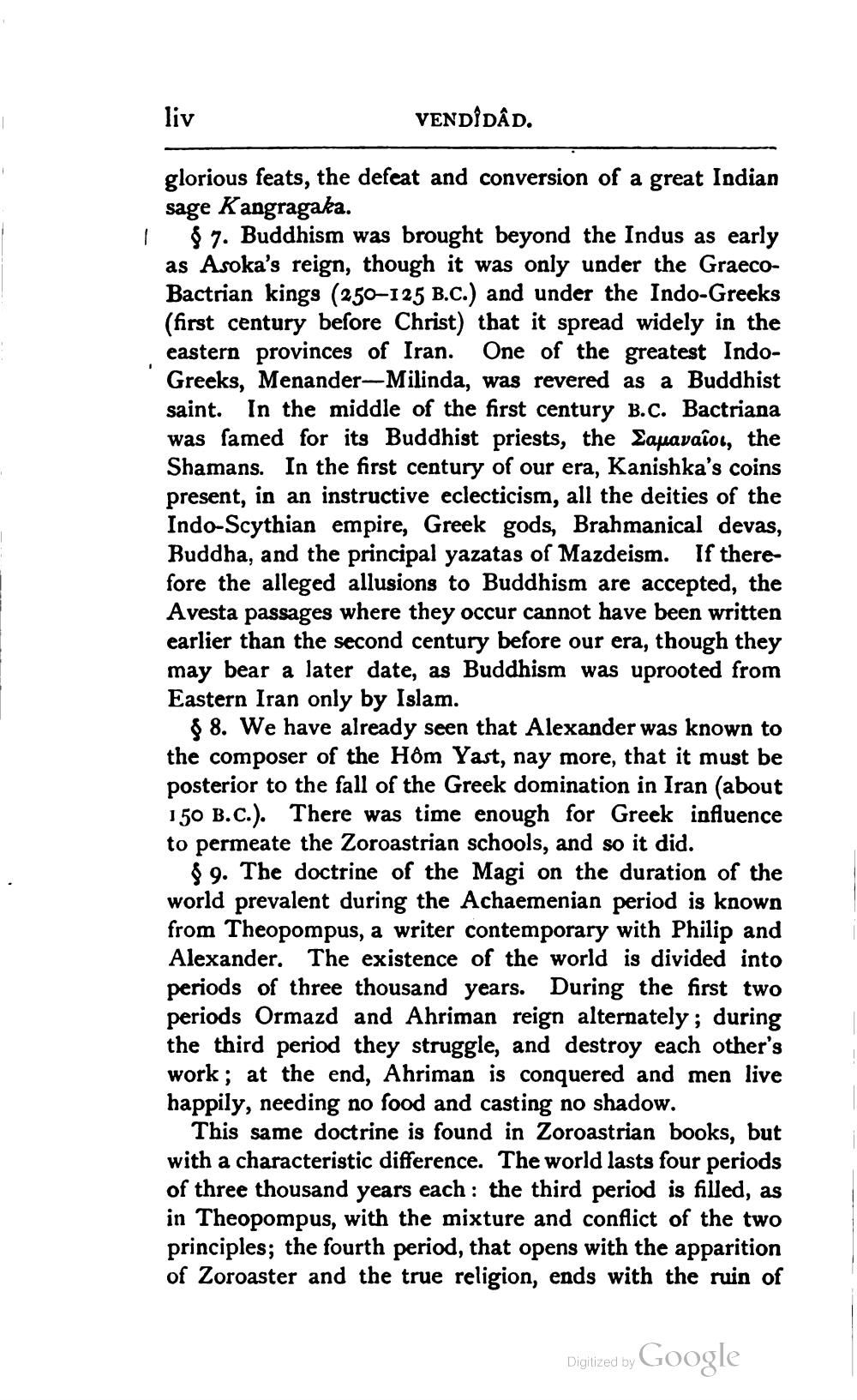________________
liv
VENDIDAD.
1
glorious feats, the defeat and conversion of a great Indian sage Kangragaka.
$ 7. Buddhism was brought beyond the Indus as early as Asoka's reign, though it was only under the GraecoBactrian kings (250–125 B.C.) and under the Indo-Greeks (first century before Christ) that it spread widely in the eastern provinces of Iran. One of the greatest IndoGreeks, Menander-Milinda, was revered as a Buddhist saint. In the middle of the first century B.C. Bactriana was famed for its Buddhist priests, the Sapavaiol, the Shamans. In the first century of our era, Kanishka's coins present, in an instructive eclecticism, all the deities of the Indo-Scythian empire, Greek gods, Brahmanical devas, Buddha, and the principal yazatas of Mazdeism. If therefore the alleged allusions to Buddhism are accepted, the Avesta passages where they occur cannot have been written earlier than the second century before our era, though they may bear a later date, as Buddhism was uprooted from Eastern Iran only by Islam.
$ 8. We have already seen that Alexander was known to the composer of the Hôm Yast, nay more, that it must be posterior to the fall of the Greek domination in Iran (about 150 B.C.). There was time enough for Greek influence to permeate the Zoroastrian schools, and so it did.
§ 9. The doctrine of the Magi on the duration of the world prevalent during the Achaemenian period is known from Theopompus, a writer contemporary with Philip and Alexander. The existence of the world is divided into periods of three thousand years. During the first two periods Ormazd and Ahriman reign alternately; during the third period they struggle, and destroy each other's work; at the end, Ahriman is conquered and men live happily, needing no food and casting no shadow.
This same doctrine is found in Zoroastrian books, but with a characteristic difference. The world lasts four periods of three thousand years each: the third period is filled, as in Theopompus, with the mixture and conflict of the two principles; the fourth period, that opens with the apparition of Zoroaster and the true religion, ends with the ruin of
Digitized by
Digitized by Google




